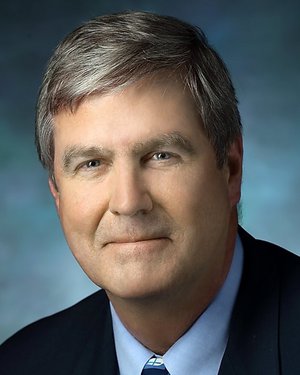Takeaway
While research findings are critical for clinical decisions, they only support the human art of empathizing with and understanding your patients.

Lifelong Learning in Clinical Excellence | October 9, 2019 | 3 min read
By John Wilckens, MD, Johns Hopkins Medicine
One of the most difficult decisions for a sports medicine surgeon is deciding when an athlete is ready to return to play after an injury. This is particularly true of adolescent athletes who have just had an anterior cruciate ligament (ACL) reconstruction.
ACL injuries are on the rise.The group with the largest increase is the adolescent athlete, occurring more frequently in girls than in boys. In addition to the increased number of injuries, more adolescent athletes are undergoing ACL reconstruction. Despite this safe, but significant, surgery, there is a 15-20% incident of re-injury in this age group, not only in the reconstructed knee, but also to the contralateral, “normal knee.”
There has been a great deal of research on this public healthcare initiative. The results are so modest that the debate has changed to, “can ACL injuries be prevented?” Many large academic centers have developed a robust consortium to register all these injuries and “dive deep” to understand causes, re-injuries, and the modest outcomes. Healthcare systems around the world are doing the same. Despite all this intellect, we have not moved the needle very much—in fact it may going the wrong way.
So a young athlete comes to your office with her family, crushed by their injury and its implications. This is a teaching moment and not a marketing opportunity. Many sports practices advertise the “latest and greatest”—better surgery and earlier return to play. Everyone loves to hear that. However, if there is only one thing more depressing than an ACL injury in adolescent athlete, it’s a re-injury.
As painful as this injury is physically and emotionally, there is a wonderful opportunity to turn the whole experience into a positive one. The initial visit should be showing empathy and educating, explaining what is going to happen over the next few days and weeks, and how that will impact their school days and everyday life. Very little should be mentioned about the specifics of surgery during the first encounter, as the patient and family may not be able to process the information at this point. Later, in a week or two, they may be interested in learning the details of the surgery.
It’s important to frame the expectations of surgery, what it does and what it doesn’t do. Going through the details of the procedure and postoperative course allows for questions and further patient/family education. While complications are rare, they need to be explained to the patient and family. The hardest discussion is talking about the return-to-play timeline and re-injury rates, a critical conversation that must occur.
After an uneventful surgery and an early successful rehabilitation, young patients are eager to return to competition. There are a battery of functional tests that can be used to demonstrate how “un-athletic” they really are. We can begin sports specific activity, but free-range competition is usually restricted until eight to nine months after surgery. Reminding patients of their initial injury helps with the buy-in. In addition, during this time, many patients have refocused their lives, and athletics may not be as important anymore. As the physician, you may have to broker that conversation between the athlete and their parents.
Despite all this information, it is very hard to define the exact time to return to competition. Obviously, they need a return of strength, agility, and confidence. Some of that is easy to measure, but some is not. A brace may be helpful in this transition.
In addition, discussion with the athlete, parents, trainers, and coaches to formulate a progression of return to play can help to ease the player back and identify areas of concern.
In the end, there is no magic criteria, though we keep exploring. After collecting as much information as I can, sometimes it is not solely a scientific decision. My “litmus test,” which has served me well, and resonates with the parents is, “If this was my child, would I let them return to play?”

